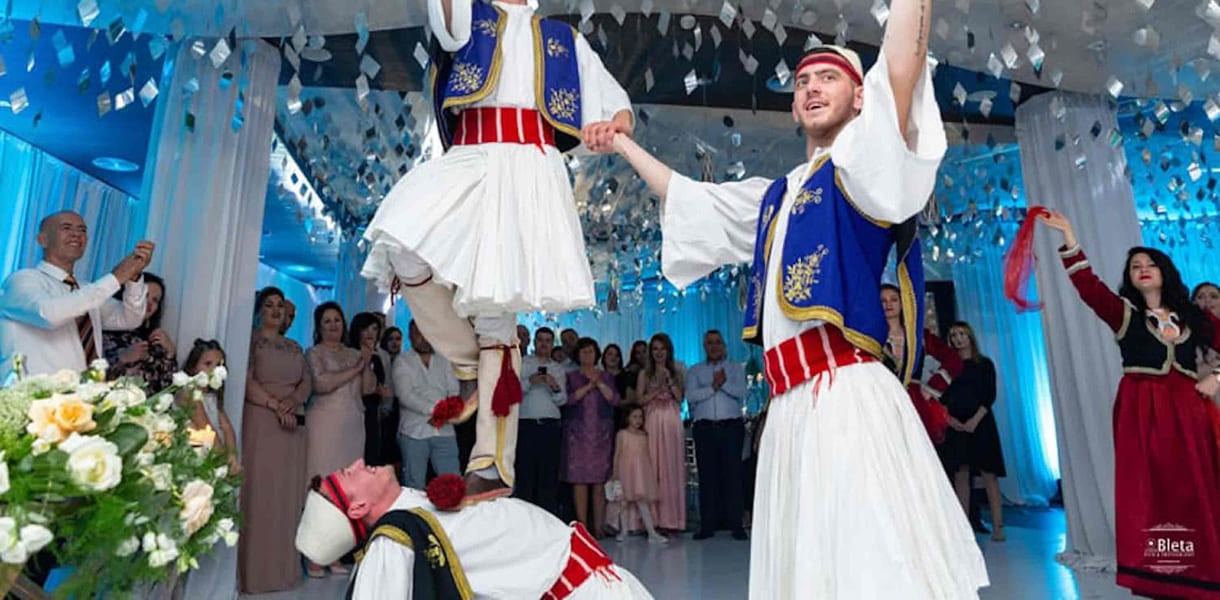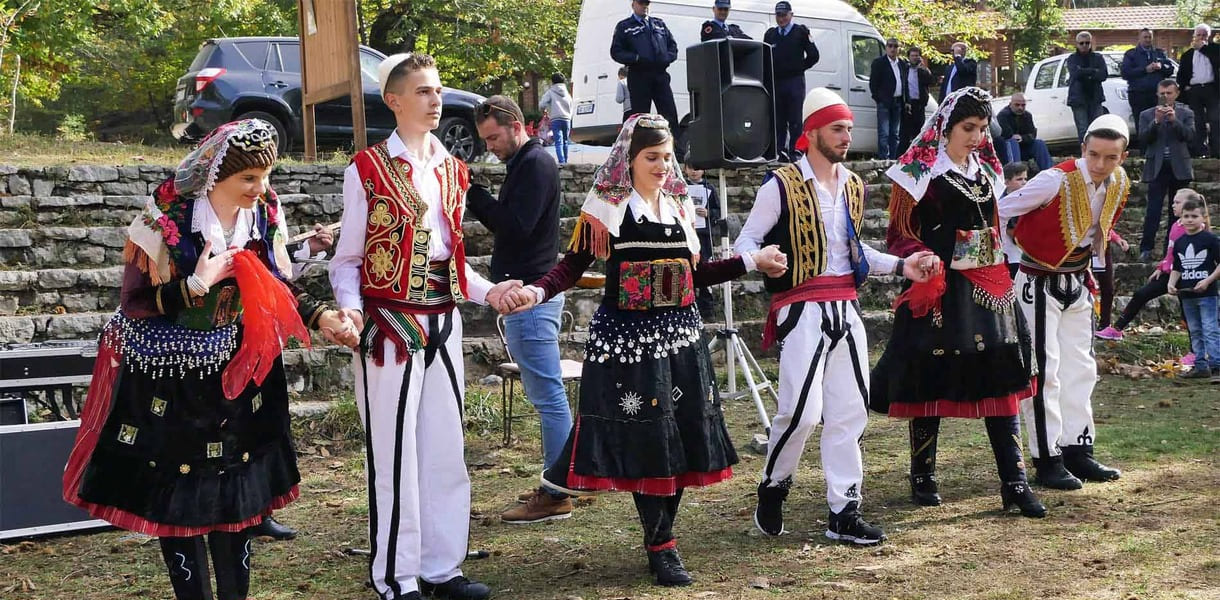One of the important aspects of lifestyle are folk costumes that with their diversity and variants enrich the Albanian cultural heritage. There are more than 200 different kinds of traditional costumes in Albania. Their variety is undoubtedly one of the most powerful manifestations of Albanian culture and traditions as well as an expression of cultural relations between peoples throughout the country’s history.
There are many similarities between traditional Albanian costumes and traditional clothing from other Balkan regions. However, Albanian clothing remains relatively unique for its strong emphasis on Illyrian tradition.
Traditional Albanian clothing is not only worn in Albania, but also by its large diaspora and the minority communities of Albanians in Italy, Greece, and Croatia.
Although each region has slightly different customs and costumes, they share similarities, such as pagan symbols, suns, eagles, moons, stars, and snakes.

Albanian clothing for men fall within two categories, the tirq and the fustanella. Both have special features that make them fashionable and comfortable to wear. The most famous Albanian traditional clothing for men is the fustanella, a skirt-like item. This costume, with its beauty and majesty surpassed other costumes of that time. The wide, white fustanella gave Albanian men that appearance of pride and luxury, that martial character and elegance of movement which no other folk costume of the Balkans could rival.
For women, it is the xhubleta, a bell-shaped skirt, representing the earliers dress in Albanian and the Balkans. It brings across the messages of the Illyrian civilization in Albanian folk culture. As of 2022, xhubleta is also part of UNESCO’s intangible cultural heritage.
A xhamadan is a wool vest or long shirt with intricate embroidery. Upper classes flaunt their wealth by having a xhamadan made with gold thread. When the weather gets cold, a Tallagan (heavy coat) is worn over the xhamadan.
Colors and materials change depending on where you go. For example, northern Albanians wear red velvet xhamadans embroidered in black or gold silk. In Southern Albania, the xhamadan is creamy or dark blue.
Traditional women costumes of south Albania feature a blouse with wide cuffs in fabric to match an embroidered vest. A pleated petticoat is worn under a full skirt, and an elaborately emboreidered apron and sash complete the outfit. Gold chains cascading from the neckline are gathered into the sash and tucked into a pocket at the right side of the skirt. A kerchief covers the woman's hair.
In the north of Albania, the sleeves of the blouse are wide, with lace embroidery along the edges. Embroidery on the apron is elaborate but distinct from the style of southern Albanian women. Gold coins are worn on a headband and on several strands of necklace adorning the bodice of the dress.



